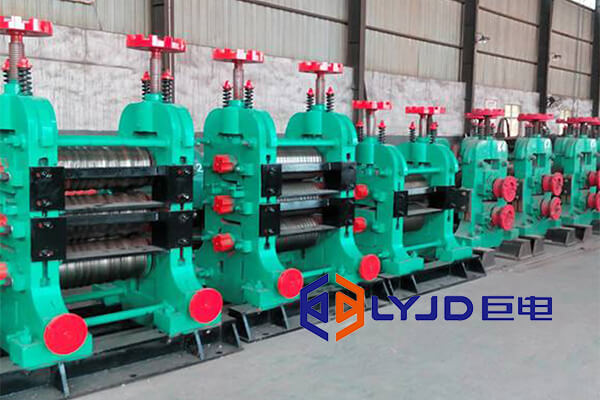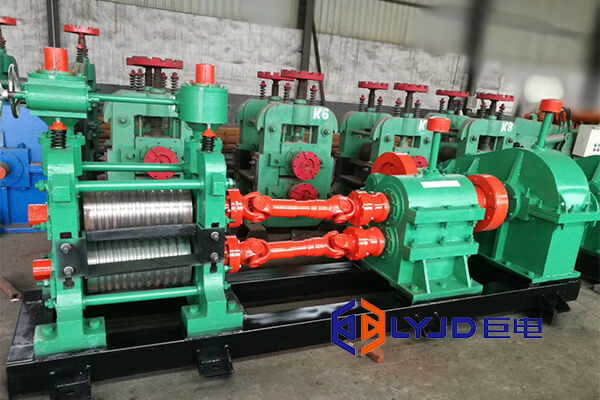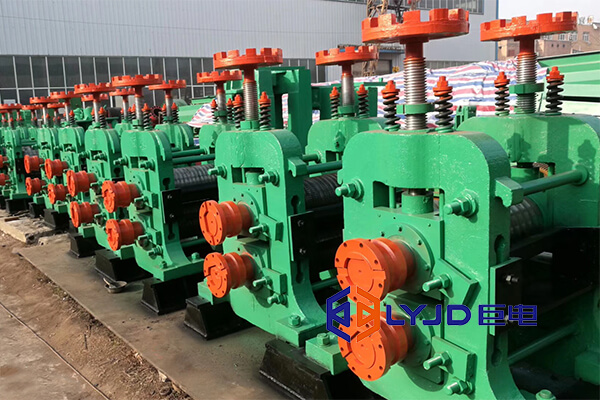A wire rolling mill is a mechanical equipment for rolling wire rods. It is a complex mechanical production line. It mainly consists of the main body of the rolling mill, transmission system, control system, and auxiliary equipment. The workflow includes steps such as billet preparation, heating, rough rolling, intermediate rolling, finishing rolling, cooling, and finished product processing. The modern wire rod rolling mill adopts computer control technology and other advanced technologies to achieve high-speed, continuous, twist-free, single-line, combined structure, mechanization, and automation production methods. The applications of wire rod mills are of a rather wide range. It involves many industries such as steel, non-ferrous metals, and construction.

The wire rolling mill is a complex mechanical equipment, including the following main parts:
This part includes the frame, rolls, bearing seats, and pressing devices. These parts form the core part of the wire rod rolling mill and are used to achieve the rolling of metal materials.
It includes the motor, reducer, gear seat, main coupling, etc. These parts provide power to enable the main body of the rolling mill to perform rolling operations.
Electrical cabinets, operating consoles, and various sensors. These parts control the whole production process, including rolling speed, temperature, pressure, and other parameters.
There is a heating furnace, cooling equipment, shearing equipment, coiling equipment, etc. This equipment assists in the rolling process, such as heating the billet, cooling the finished product, cutting excess material ends, coiling the finished product, etc.

According to production needs, prepare metal blanks of corresponding specifications and materials.
Send the blank into the heating furnace for heating to reach a suitable plastic state. Heating temperature and time need to be strictly controlled according to the material and specifications of the blank.
The heated billet enters the rough rolling unit for preliminary rolling. The rough rolling mill usually consists of several rolling mills. Through the rotation and pressing of the rollers, the billet is rolled into an intermediate billet of a certain shape and size.
The intermediate billet enters the intermediate rolling unit for further processing. The task of the intermediate rolling mill is to roll the rough-rolled billet closer to the target shape and size. This process needs to be realized by adjusting parameters such as the rolling reduction and rolling speed of the rolling mill.
The blank after intermediate rolling enters the finishing rolling unit for final processing. The task of the finishing mill is to roll the intermediate billet into wire rods of the required size and shape. This process requires more precise control of parameters such as rolling mill reduction and rolling speed to ensure product quality.
The finished wire rod needs to be cooled to eliminate internal stress and improve the metallographic structure. Cooling methods usually use water cooling or air cooling.
Finished product processing: The cooled wire needs finished product processing, including cutting, coiling, packaging, and other operations to facilitate storage and transportation.
With the advancement of science and technology, the rolling speed of wire rod rolling mills continues to increase, achieving high-speed production. This not only improves production efficiency but also reduces production costs.
The rolling speed of wire rod mills varies depending on equipment models, production processes, and production requirements. Generally speaking, the rolling speed of modern wire rod rolling mills can reach tens or even hundreds of meters per second.
Specifically, the horizontal full-continuous rolling wire rod mill adopts collective transmission and multi-line rolling, and the rolling speed is 20 to 30 meters per second. The straight-line finishing rolling unit is alternately arranged between flat and vertical. Each stand is driven by a DC motor independently. Cantilevered vertical rollers and horizontal rollers are arranged alternately to carry out multi-pass single-line rolling. The rolling speed can reach about 35 meters per second. In addition, the rolling speed of some advanced wire rod rolling mills, such as Y-shaped finishing mills, can even reach more than 50 meters per second.

Modern wire rod rolling mills adopt advanced computer control technology and sensor technology to achieve automated production. From the heating and rolling of the billet to the cooling and processing of the finished product, the entire process can be automatically controlled by a computer, greatly improving production efficiency and product quality.
Modern wire rod rolling mills use high-precision rolling technology and high-precision testing equipment to produce wire rod products with higher dimensional accuracy and better surface quality. This not only meets the market demand for high-quality wires but also increases the added value of the product.
In the design and manufacturing process of modern wire rod rolling mills, we need to take full consideration of the requirements of energy saving and environmental protection. By optimizing equipment structure, improving production processes, using environmentally friendly materials, and other measures. The energy consumption and emissions are reduced, and green production is achieved.
Modern wire rod rolling mills not only have rolling functions but also have other auxiliary functions, such as online detection, online heat treatment, etc. The addition of these functions makes the wire rod rolling mill more widely used and meets the special needs of wire rods in different fields.
With the development of technologies such as the Internet of Things, big data, and artificial intelligence, modern wire rod rolling mills have also begun to develop in the direction of intelligence. By collecting and analyzing production data and optimizing production processes and equipment maintenance plans, we can fulfill the intelligent production and management of the wire rod production line.
Wire rod rolling mills are widely used in the steel industry, copper and aluminum industry, construction industry, shipbuilding, and other fields.
In the steel industry, wire rod mills apply to produce various types and specifications of steel, strips, plates, and other products, including wire rods, rebars, round bars, etc. In the copper and aluminum industry, wire rod mills can produce various types of copper, aluminum, and their alloys. For the construction industry, wire rod rolling mills are used to produce various types and specifications of steel bars, wire rods, and other products, and are widely used in the construction field. Additionally, wire rod mills can also produce various ship parts, such as ship plates, bridge frames, etc.
The wire rod rolling mill is one of the very important equipment in the metal processing industry. Its technical level and production efficiency directly affect metal products' quality and production cost. With the continuous advancement of science and technology, the performance and efficiency of wire rod rolling mills are also constantly improving, providing a better guarantee for producing metal products.
Please send us your request and we reply to you with in 24 hours.
Submit Request